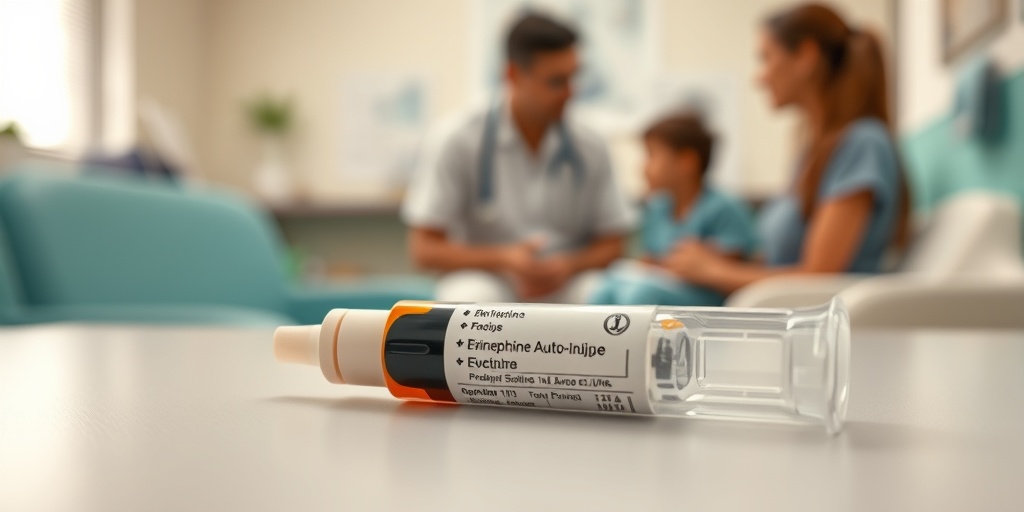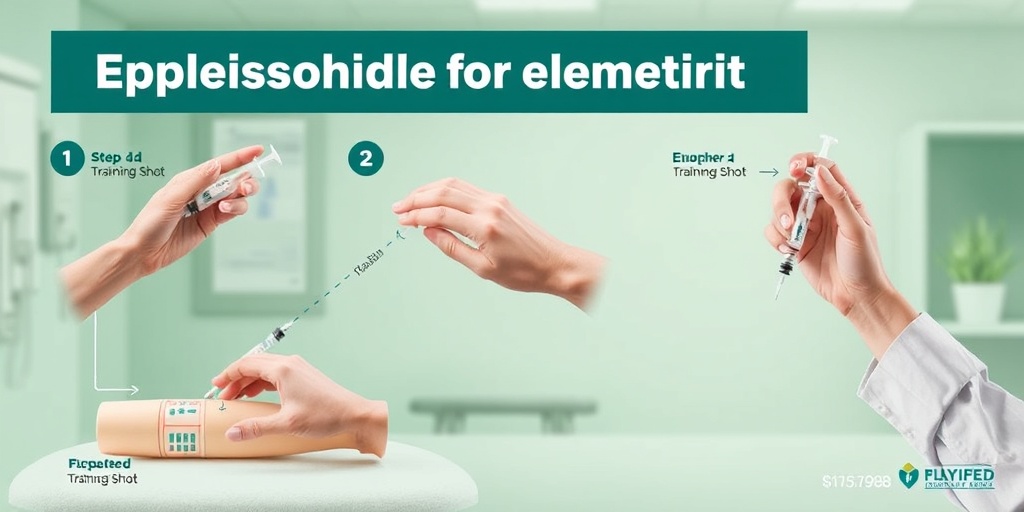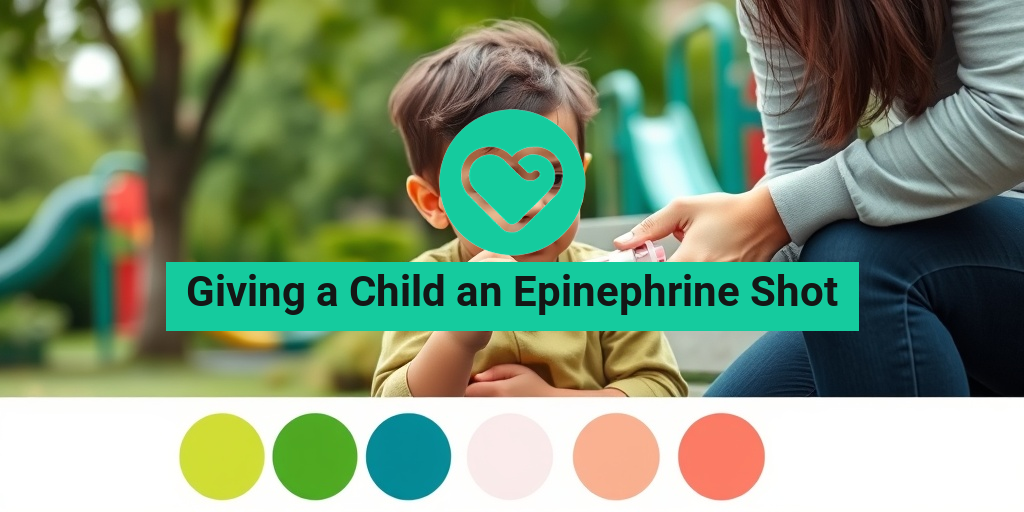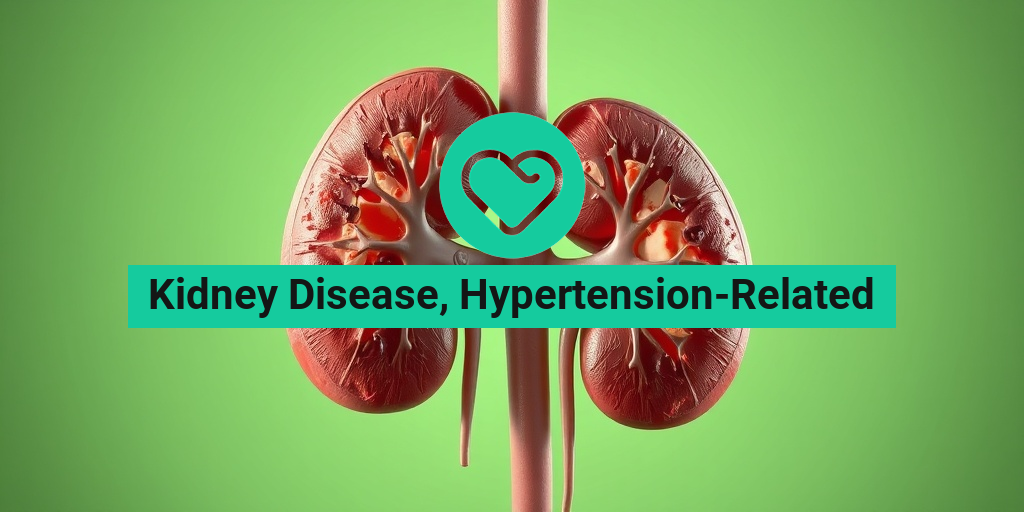What Is Epinephrine?
Epinephrine, commonly known as adrenaline, is a hormone and neurotransmitter produced by the adrenal glands. It plays a crucial role in the body’s fight-or-flight response, preparing the body to react to stressful situations. When released into the bloodstream, epinephrine increases heart rate, elevates blood pressure, and boosts energy supplies. This powerful hormone is essential in emergency medical situations, particularly for individuals experiencing severe allergic reactions, known as anaphylaxis.
The Role of Epinephrine in Anaphylaxis
Anaphylaxis is a life-threatening allergic reaction that can occur within minutes of exposure to allergens such as certain foods, insect stings, or medications. During anaphylaxis, the body releases a flood of chemicals, leading to symptoms like difficulty breathing, swelling of the throat, rapid heartbeat, and a drop in blood pressure. In such cases, administering an epinephrine shot can be lifesaving.
Forms of Epinephrine
Epinephrine is available in various forms, but the most common method for emergency use is through an auto-injector, such as the EpiPen. These devices are designed for easy use, allowing individuals or caregivers to administer the medication quickly and effectively. It’s essential for parents and caregivers to be familiar with how to use an epinephrine auto-injector, especially if their child has a known allergy.
When to Use Epinephrine
Knowing when to use epinephrine can be a matter of life and death. Here are some key situations where administering an epinephrine shot is necessary:
Signs of Anaphylaxis
- Difficulty Breathing: This may include wheezing, shortness of breath, or a tight feeling in the chest.
- Swelling: Look for swelling of the face, lips, throat, or tongue, which can obstruct airways.
- Rapid Heartbeat: A sudden increase in heart rate can indicate a severe reaction.
- Skin Reactions: Hives, rashes, or flushing can occur, often accompanied by itching.
- Dizziness or Fainting: A drop in blood pressure can lead to feelings of lightheadedness or loss of consciousness.
Immediate Action Required
If you observe any of these symptoms in a child who has a known allergy, it is crucial to act quickly. Administer the epinephrine shot as soon as possible, even if you are unsure whether the reaction is anaphylaxis. Delaying treatment can lead to severe complications or even death.
Post-Administration Care
After administering the epinephrine shot, it is vital to seek emergency medical help immediately. Even if symptoms improve, further medical evaluation is necessary, as the effects of epinephrine can wear off, and symptoms may return. Always keep a second dose of epinephrine on hand, as some individuals may require more than one dose during a severe allergic reaction.
Educating Others
It’s essential to educate family members, teachers, and caregivers about the signs of anaphylaxis and how to use an epinephrine auto-injector. This knowledge can be lifesaving in emergencies. Consider practicing with a trainer device to ensure everyone feels confident in their ability to respond effectively.
For more information on managing allergies and understanding the use of epinephrine, visit Yesil Health AI, a valuable resource for evidence-based health answers.
In conclusion, understanding giving a child an epinephrine shot is crucial for parents and caregivers of children with allergies. By recognizing the signs of anaphylaxis and knowing how to respond, you can help ensure your child’s safety in potentially life-threatening situations. Remember, acting quickly and confidently can make all the difference! 🚑

Epinephrine Symptoms to Watch For
When it comes to severe allergic reactions, also known as anaphylaxis, recognizing the symptoms is crucial. Giving a child an epinephrine shot can be life-saving, but knowing when to administer it is just as important. Here are some key symptoms to watch for:
Common Symptoms of Anaphylaxis
- Skin Reactions: Look for hives, redness, or swelling, particularly around the face and lips.
- Respiratory Issues: Symptoms may include wheezing, difficulty breathing, or a tight feeling in the throat.
- Gastrointestinal Symptoms: Nausea, vomiting, or diarrhea can occur during an allergic reaction.
- Cardiovascular Symptoms: Rapid heartbeat, low blood pressure, or fainting may indicate a severe reaction.
- Neurological Symptoms: Dizziness, confusion, or loss of consciousness can also be signs of anaphylaxis.
It’s essential to act quickly if you notice any of these symptoms in your child. Anaphylaxis can escalate rapidly, and timely intervention is critical. If you suspect your child is experiencing an allergic reaction, don’t hesitate to prepare for giving a child an epinephrine shot if they have a prescribed auto-injector.
When to Use an Epinephrine Auto-Injector
Knowing when to use an epinephrine auto-injector can be a matter of life and death. Here are some guidelines:
- If your child has a known allergy and exhibits any symptoms of anaphylaxis.
- If they have a history of severe allergic reactions, even if symptoms are mild.
- If they have been exposed to an allergen (like peanuts, tree nuts, or bee stings) and show any signs of a reaction.
Always err on the side of caution. If you’re unsure, it’s better to administer the shot than to wait and risk a more severe reaction. Remember, epinephrine can be given multiple times if symptoms do not improve within 5-15 minutes.
How to Administer an Epinephrine Shot
Administering an epinephrine shot may seem daunting, but with the right knowledge and preparation, you can do it confidently. Here’s a step-by-step guide to help you through the process:
Step 1: Prepare the Auto-Injector
Before you administer the shot, ensure you have the auto-injector ready:
- Check the expiration date on the auto-injector.
- Make sure the solution is clear and not discolored.
- Remove the safety cap from the injector.
Step 2: Position Your Child
Have your child sit or lie down in a comfortable position. If they are conscious and able to cooperate, sitting up may help them breathe easier. If they are unconscious or unresponsive, lay them flat on their back.
Step 3: Administer the Injection
Follow these steps to give the injection:
- Hold the auto-injector firmly in your dominant hand.
- Position the injector against the outer thigh, at a 90-degree angle.
- Press down firmly until you hear a click, indicating the needle has been deployed.
- Hold the injector in place for about 3 seconds to ensure the medication is delivered.
Step 4: Aftercare
After administering the epinephrine shot, it’s essential to monitor your child closely:
- Call emergency services immediately, even if symptoms seem to improve.
- Keep your child calm and seated or lying down.
- If symptoms do not improve within 5-15 minutes, a second dose may be necessary.
Remember, giving a child an epinephrine shot is a critical skill that can save lives. Practice with a trainer device if available, and ensure that all caregivers are familiar with the process. Your preparedness can make all the difference in an emergency! 🚑

Common Mistakes to Avoid
Administering an epinephrine shot to a child can be a life-saving action during an allergic reaction. However, there are several common mistakes that caregivers often make. Being aware of these can help ensure that the injection is effective and safe.
1. Not Recognizing the Signs of Anaphylaxis
One of the most critical mistakes is failing to recognize the signs of anaphylaxis. Symptoms can include:
- Difficulty breathing
- Swelling of the face, lips, or throat
- Rapid heartbeat
- Skin reactions (hives, rash)
- Dizziness or fainting
Understanding these symptoms is vital for timely intervention. If you suspect anaphylaxis, don’t hesitate to act!
2. Incorrect Injection Technique
Using the wrong technique can lead to ineffective administration of the epinephrine. Here are some tips to ensure proper technique:
- Always inject into the outer thigh, as this area has a large muscle mass.
- Hold the auto-injector firmly and press it against the thigh until you hear a click.
- Keep the injector in place for at least 3 seconds to ensure the medication is delivered.
Practicing with a trainer device can help build confidence and ensure you’re prepared in an emergency.
3. Not Carrying an Epinephrine Auto-Injector
Another common mistake is not having an epinephrine auto-injector readily available. Always carry at least one auto-injector, especially if your child has known allergies. Consider these tips:
- Keep the auto-injector in a cool, dry place.
- Check the expiration date regularly.
- Have a backup injector in case of emergencies.
Being prepared can make all the difference in a critical situation! 🚑
4. Ignoring the Need for Medical Attention
After administering an epinephrine shot, it’s crucial to seek medical help immediately, even if symptoms seem to improve. Anaphylaxis can have a biphasic reaction, meaning symptoms can return after initial treatment. Always call emergency services or head to the nearest hospital.
Aftercare Following an Injection
After giving a child an epinephrine shot, proper aftercare is essential to ensure their safety and well-being. Here are some important steps to follow:
1. Monitor the Child’s Condition
After administering the injection, closely monitor your child for any changes in their condition. Look for:
- Improvement in breathing
- Reduction in swelling
- Any new symptoms that may arise
Keep a watchful eye for at least 4-6 hours, as symptoms can reoccur.
2. Keep the Child Calm
It’s important to keep your child calm after the injection. Anxiety can exacerbate symptoms, so try to reassure them. Engage them in a calming activity, such as reading a book or watching a favorite show. 😊
3. Follow Up with Healthcare Providers
After the incident, schedule a follow-up appointment with your child’s healthcare provider. Discuss the allergic reaction, review the use of the epinephrine auto-injector, and consider allergy testing if it hasn’t been done already. This can help in managing future risks.
4. Educate Your Child
As your child grows, it’s essential to educate them about their allergies and the importance of the epinephrine auto-injector. Teach them:
- How to recognize their allergy symptoms
- When to use the auto-injector
- How to communicate their allergies to others
Empowering your child with knowledge can help them feel more in control and prepared. 🦸♂️
By avoiding common mistakes and following proper aftercare, you can help ensure your child’s safety during an allergic reaction. Remember, being prepared and informed is key! 🌟

Understanding Allergic Reactions
Allergic reactions can be frightening, especially when they occur in children. Understanding what triggers these reactions and how to respond is crucial for every parent. An allergic reaction happens when the immune system mistakenly identifies a harmless substance as a threat. This can lead to a range of symptoms, from mild to severe.
Common Allergens
Children can be allergic to various substances, including:
- Food: Common allergens include peanuts, tree nuts, milk, eggs, soy, wheat, fish, and shellfish.
- Insect Stings: Bees, wasps, and fire ants can cause severe allergic reactions.
- Medications: Some children may react to antibiotics or other medications.
- Pollen and Dust: Seasonal allergies can be triggered by pollen from trees, grasses, and weeds, as well as dust mites.
Symptoms of Allergic Reactions
Recognizing the symptoms of an allergic reaction is vital. Symptoms can vary widely and may include:
- Skin Reactions: Hives, rashes, or swelling.
- Respiratory Issues: Wheezing, coughing, or difficulty breathing.
- Gastrointestinal Symptoms: Nausea, vomiting, or diarrhea.
- Anaphylaxis: A severe, life-threatening reaction that requires immediate medical attention.
In children, symptoms can escalate quickly, making it essential to act fast. If you suspect your child is having an allergic reaction, especially if they have a history of allergies, it’s crucial to monitor their symptoms closely.
Emergency Response Tips
When faced with an allergic reaction, knowing how to respond can save a life. Here are some essential tips for parents:
1. Recognize the Signs
As mentioned earlier, being able to identify the symptoms of an allergic reaction is the first step. If your child shows signs of anaphylaxis, such as difficulty breathing, swelling of the face or throat, or a rapid heartbeat, you must act immediately.
2. Administering an Epinephrine Shot
If your child has been prescribed an epinephrine auto-injector (like an EpiPen), it’s crucial to know how to use it:
- Remove the cap: Take off the safety cap from the auto-injector.
- Position the injector: Hold the injector in your dominant hand, with your thumb on the bottom and fingers around the body.
- Inject: Press the tip against the outer thigh and push down firmly until you hear a click. Hold it in place for about 3 seconds.
- Seek medical help: After administering the shot, call emergency services or take your child to the nearest hospital.
Remember, it’s better to be safe than sorry. If you’re unsure whether your child is having a severe reaction, it’s always best to administer the epinephrine and seek help.
3. Stay Calm and Reassure Your Child
In an emergency, your demeanor can significantly impact your child’s response. Staying calm and reassuring them can help reduce their anxiety. Explain what’s happening in simple terms and let them know that help is on the way. 😊
4. Follow Up with Healthcare Providers
After an allergic reaction, it’s essential to follow up with your child’s healthcare provider. They can help determine the cause of the reaction and discuss long-term management strategies. This may include allergy testing or creating an action plan for future incidents.
5. Educate Others
Make sure that caregivers, teachers, and family members are aware of your child’s allergies and know how to respond in case of an emergency. Providing them with a written action plan can be incredibly helpful. 📝
By understanding allergic reactions and knowing how to respond effectively, you can help ensure your child’s safety and well-being. Remember, being prepared is key! 🛡️

Frequently Asked Questions about Giving a Child an Epinephrine Shot
What is an epinephrine shot?
An epinephrine shot is a medication used to treat severe allergic reactions, known as anaphylaxis. It works quickly to reduce swelling, open airways, and improve breathing.
When should I give my child an epinephrine shot?
You should administer an epinephrine shot if your child shows signs of a severe allergic reaction, such as difficulty breathing, swelling of the face or throat, rapid heartbeat, or a rash. Always follow your healthcare provider’s instructions.
How do I give an epinephrine shot to my child?
To give an epinephrine shot:
- Remove the auto-injector from its case.
- Hold the injector firmly and remove the safety cap.
- Place the tip against the outer thigh and press down firmly until you hear a click.
- Hold it in place for about 3 seconds to ensure the medication is delivered.
- Seek medical help immediately after administering the shot.
Are there any side effects of an epinephrine shot?
While epinephrine is generally safe, some side effects may include:
- Increased heart rate
- Shakiness
- Headache
- Nausea
If you notice severe side effects, contact a healthcare professional right away.
How can I prepare my child for an epinephrine shot?
To prepare your child:
- Explain what an epinephrine shot is and why it’s important.
- Practice using a trainer device if available.
- Reassure them that it will help them feel better.
What should I do after giving the shot?
After administering the shot, you should:
- Call emergency services or go to the nearest hospital.
- Monitor your child for any changes in their condition.
- Be prepared to give a second dose if symptoms do not improve within 5-15 minutes.
Can I give an epinephrine shot through clothing?
Yes, you can give an epinephrine shot through clothing if necessary. However, it’s best to expose the thigh to ensure proper delivery of the medication.
How often should I replace my child’s epinephrine auto-injector?
Check the expiration date on the auto-injector regularly. It’s recommended to replace it before the expiration date to ensure effectiveness. Always have a backup available.
What should I do if my child is afraid of getting an epinephrine shot?
Address their fears by:
- Talking openly about their concerns.
- Using positive reinforcement.
- Practicing with a trainer device.
Encourage them to ask questions and reassure them that the shot is a vital tool for their safety. 😊




